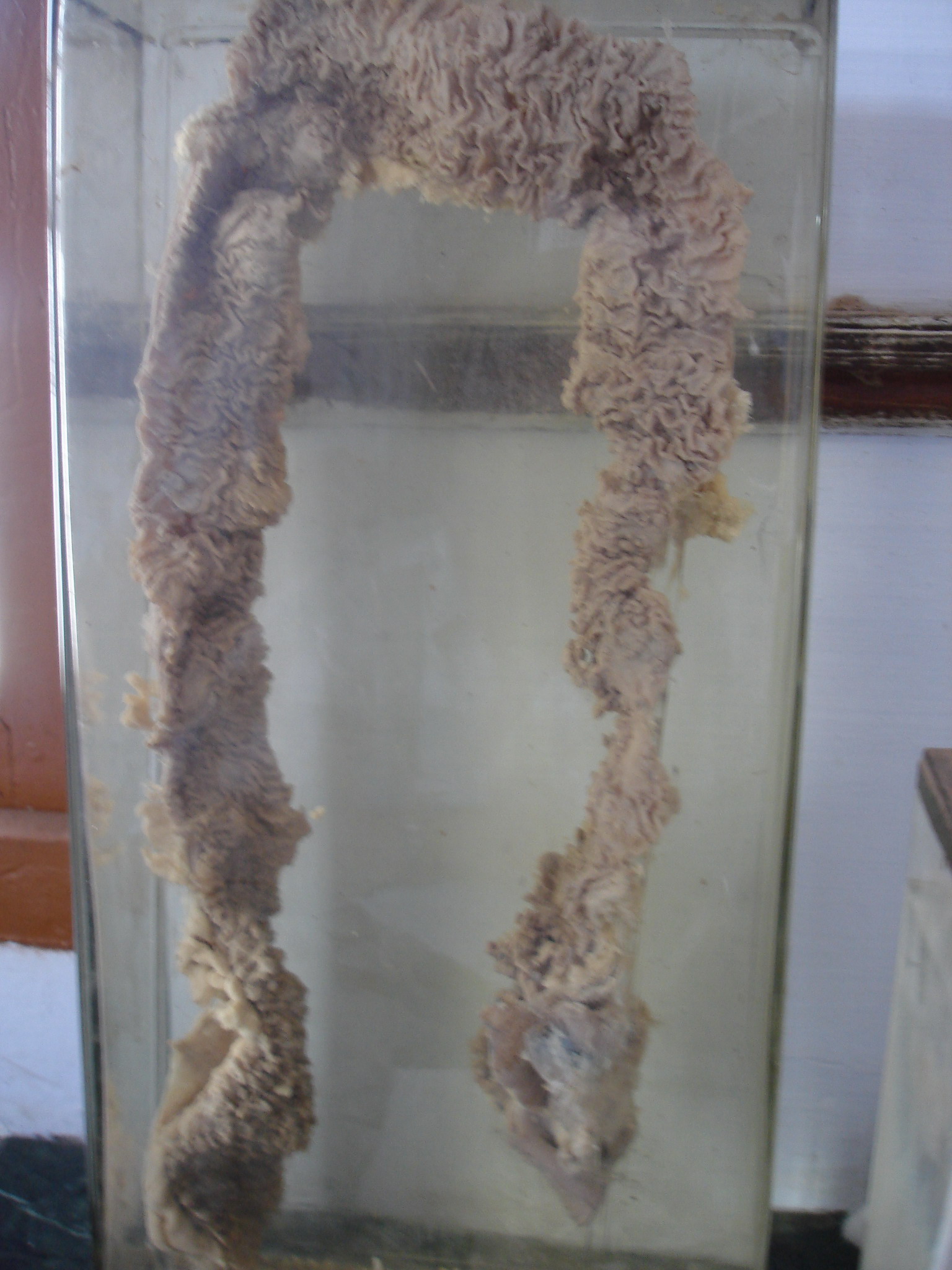Familial adenomatous polyposis pathophysiology
|
Familial adenomatous polyposis Microchapters |
|
Differentiating Familial adenomatous polyposis from other Diseases |
|---|
|
Diagnosis |
|
Treatment |
|
Case Studies |
|
Familial adenomatous polyposis pathophysiology On the Web |
|
American Roentgen Ray Society Images of Familial adenomatous polyposis pathophysiology |
|
Directions to Hospitals Treating Familial adenomatous polyposis |
|
Risk calculators and risk factors for Familial adenomatous polyposis pathophysiology |
Editor-In-Chief: C. Michael Gibson, M.S., M.D. [1] Associate Editor(s)-in-Chief: Sadaf Sharfaei M.D.[2], Mohamad Alkateb, MBBCh [3]
Overview
Genes involved in the pathogenesis of familial adenomatous polyposis include APC and MUTYH genes.
Pathophysiology
Pathogenesis
Genetics
- Familial adenomatous polyposis may have different inheritance patterns and genes involved.[1]
- Familial adenomatous polyposis is due to mutations in different genes, including:[2]
- APC gene, which is located on chromosome 5 in band q21 or band q22 (5q21-q22)
- Three hundred mutations of APC gene have been discovered for familial adenomatous polyposis.
- They have premature stop codons and lead to a truncated protein.
- Mutation is seen in 6% of Ashkenazi Jews.
- Mutation is seen in about 28% of those of Ashkenazi descent with a family history of colorectal cancer.
- MUTYH gene, which is located on chromosome 1 between bands p34.2 and p32.1 (1p34.3-p32.1)
- APC gene, which is located on chromosome 5 in band q21 or band q22 (5q21-q22)
- Familial adenomatous polyposis has autosomal dominant inheritance pattern if it results from mutations in the APC gene.
- Familial adenomatous polyposis has autosomal recessive inheritance pattern if it results from mutations in the MUTYH gene.
- mutation is found in
6% of Ashkenazi Jews and in about 28% of those of Ashkenazi descent with a family history of colorectal cancer.
Associated Conditions
Familial adenomatous polyposis is associated with other gastrointestinal and extra intestinal conditions including:[3][4][5]
Gastrointestinal conditions
- Duodenal adenoma
- Stomach cancer
- The risk is approximately 0.5%.
- Periampullary cancer
- The risk is approximately 10%.
- Pancreatic cancer
- The risk is approximately 2%.
- Hepatoblastoma
- The risk is approximately 1.5%.
- Bile duct cancer
Extra intestinal conditions
- Adrenal masses
- Desmoid tumor
- The risk is approximately 10% to 20%.
- It mostly happens in small bowel mesentery.
- Papillary thyroid cancer
- The risk is approximately 2% to 25%.
- Medulloblastoma
- Osteomas
- It is a benign bony growth mainly on jaw
- Congenital hypertrophy of the retinal pigment epithelium

- Epidermoid cysts and fibromas
Gross Pathology


Microscopic Pathology
References
- ↑ Brensinger JD, Laken SJ, Luce MC, Powell SM, Vance GH, Ahnen DJ, Petersen GM, Hamilton SR, Giardiello FM (1998). "Variable phenotype of familial adenomatous polyposis in pedigrees with 3' mutation in the APC gene". Gut. 43 (4): 548–52. PMC 1727294. PMID 9824584.
- ↑ Iaquinto, Gaetano; Fornasarig, Mara; Quaia, Michele; Giardullo, Nicola; D'Onofrio, Vittorio; Iaquinto, Salvatore; Di Bella, Simone; Cannizzaro, Renato (2008). "Capsule endoscopy is useful and safe for small-bowel surveillance in familial adenomatous polyposis". Gastrointestinal Endoscopy. 67 (1): 61–67. doi:10.1016/j.gie.2007.07.048. ISSN 0016-5107.
- ↑ Beech D, Pontius A, Muni N, Long WP (2001). "Familial adenomatous polyposis: a case report and review of the literature". J Natl Med Assoc. 93 (6): 208–13. PMC 2594024. PMID 11446392.
- ↑ Kennedy, Raelene D.; Potter, D. Dean; Moir, Christopher R.; El-Youssef, Mounif (2014). "The natural history of familial adenomatous polyposis syndrome: A 24year review of a single center experience in screening, diagnosis, and outcomes". Journal of Pediatric Surgery. 49 (1): 82–86. doi:10.1016/j.jpedsurg.2013.09.033. ISSN 0022-3468.
- ↑ King, John E.; Dozois, Roger R.; Lindor, Noralane M.; Ahlquist, David A. (2000). "Care of Patients and Their Families With Familial Adenomatous Polyposis". Mayo Clinic Proceedings. 75 (1): 57–67. doi:10.4065/75.1.57. ISSN 0025-6196.
- ↑ "File:Congenital hypertrophy of the retinal pigment epithelium.jpg - Wikimedia Commons".
- ↑ "File:Familial Adenomatous Polyposis intestine.jpg - Wikimedia Commons".
- ↑ [+https://commons.wikimedia.org/w/index.php?curid=63631954 "File:Familial adenomatous polyposis.jpg - Wikimedia Commons"] Check
|url=value (help).